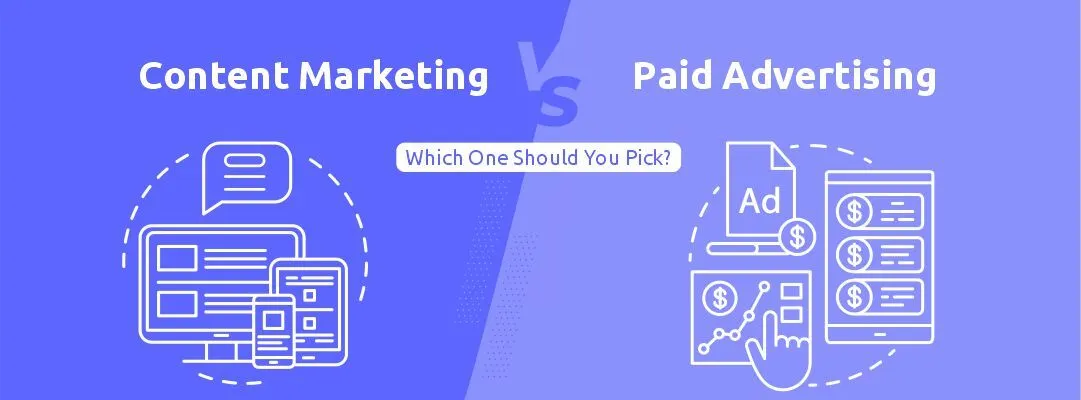Content Marketing vs. Paid Advertising: Which is Right for Your Business?
Imagine you’re at a bustling marketplace. On one side, there’s a friendly
storyteller, weaving tales that draw people in over time. On the other, a vendor with a megaphone,
shouting out special deals to attract instant attention. Both approaches have their charm, but which one
works best for your business? Let’s explore the worlds of content marketing and paid advertising,
understand their pros and cons, and figure out how to choose the right path for your
brand.
Content Marketing: Planting the Seeds of Trust
Content marketing is like growing
a garden. You plant seeds through blogs, videos, social media posts, or newsletters, and over time,
these efforts bloom into trust and loyalty. It’s a strategy for those willing to nurture relationships
and let their brand grow organically.
Pros of Content Marketing
- Long-term trust: Like a tree that grows over years, content builds credibility and authority.
- SEO magic: Well-crafted content improves your visibility on search engines, attracting organic traffic.
- Cost-efficient: Once created, content keeps bringing value without needing continuous investment.
- Deeper connections: Storytelling and helpful content engage customers emotionally, building brand loyalty.
Cons of Content Marketing
- Slow burn: Results aren’t immediate—it takes time for the seeds to grow.
- Effort-intensive: Quality content demands creativity, research, and consistency.
- Harder to measure ROI: Tracking exactly how content translates into conversions can be tricky.
Paid Advertising: The Fast Track to Visibility
Paid advertising is like catching a cab to your destination—it gets you there faster. Platforms like Google Ads and social media ads let you reach your target audience instantly. But the moment you stop spending, the ride is over.
Pros of Paid Advertising
- Immediate results: Ads deliver quick traffic and conversions—no waiting around.
- Precision targeting: You can serve ads to the right people at the right time with data-backed insights.
- Scalable campaigns: Whether you need a local boost or national exposure, paid ads can scale to your needs.
- Easy to measure: Ad platforms offer analytics that show exactly where your money is going and what’s working.
Cons of Paid Advertising
- Costs add up: You’ll need a budget for ongoing ad spend. No spend, no visibility.
- Short-lived impact: The moment you stop running ads, the traffic disappears.
- Ad fatigue: Users may grow numb to ads, especially if they’re not well-targeted or engaging.
How to Choose the Right Strategy
The choice between content marketing and paid advertising depends on your business goals, timeline, and resources. Are you building a brand that customers will trust for years, or do you need quick sales to meet short-term targets? Here’s how to decide:
Go with Content Marketing if…
You’re looking to create long-lasting relationships, establish your expertise, and prefer organic growth. It’s a marathon, not a sprint—perfect for those who believe in the power of storytelling.
Choose Paid Advertising if…
You need fast results, like promoting a sale or event. If you have a budget and want to scale quickly, ads will get you there. It’s a sprint that gets you ahead—but it’s not a permanent solution.
Can’t Decide? Combine Both!
Why choose just one when you can have the best of both worlds? Think of content marketing and paid ads as a dynamic duo—each complementing the other. Use content to build a foundation of trust, and ads to amplify your message when needed.
Final Thoughts
Choosing between content marketing and paid advertising isn’t a matter of right or wrong—it’s about knowing what works best for your business and balancing short-term wins with long-term growth. Both have their place in a successful digital marketing toolkit. The key is to align your strategy with your business goals.
